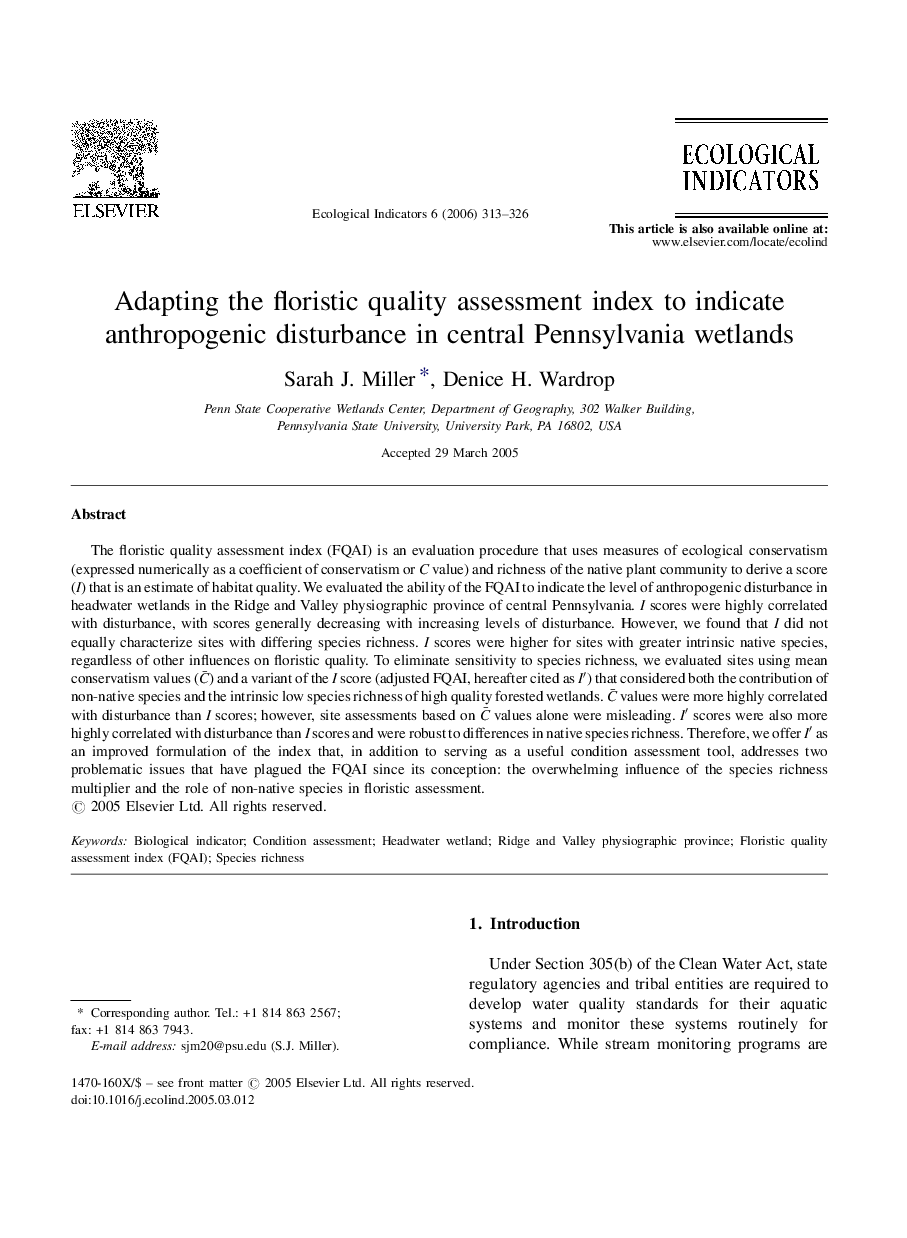| Article ID | Journal | Published Year | Pages | File Type |
|---|---|---|---|---|
| 4374585 | Ecological Indicators | 2006 | 14 Pages |
The floristic quality assessment index (FQAI) is an evaluation procedure that uses measures of ecological conservatism (expressed numerically as a coefficient of conservatism or C value) and richness of the native plant community to derive a score (I) that is an estimate of habitat quality. We evaluated the ability of the FQAI to indicate the level of anthropogenic disturbance in headwater wetlands in the Ridge and Valley physiographic province of central Pennsylvania. I scores were highly correlated with disturbance, with scores generally decreasing with increasing levels of disturbance. However, we found that I did not equally characterize sites with differing species richness. I scores were higher for sites with greater intrinsic native species, regardless of other influences on floristic quality. To eliminate sensitivity to species richness, we evaluated sites using mean conservatism values (C¯) and a variant of the I score (adjusted FQAI, hereafter cited as I ′) that considered both the contribution of non-native species and the intrinsic low species richness of high quality forested wetlands. C¯ values were more highly correlated with disturbance than I scores; however, site assessments based on C¯ values alone were misleading. I′ scores were also more highly correlated with disturbance than I scores and were robust to differences in native species richness. Therefore, we offer I′ as an improved formulation of the index that, in addition to serving as a useful condition assessment tool, addresses two problematic issues that have plagued the FQAI since its conception: the overwhelming influence of the species richness multiplier and the role of non-native species in floristic assessment.
